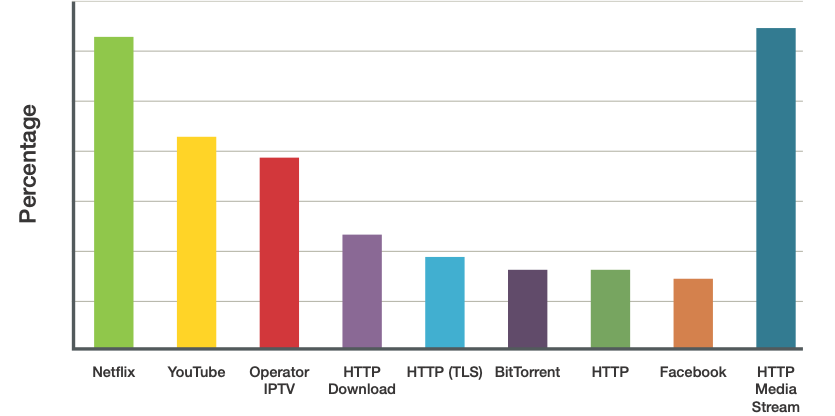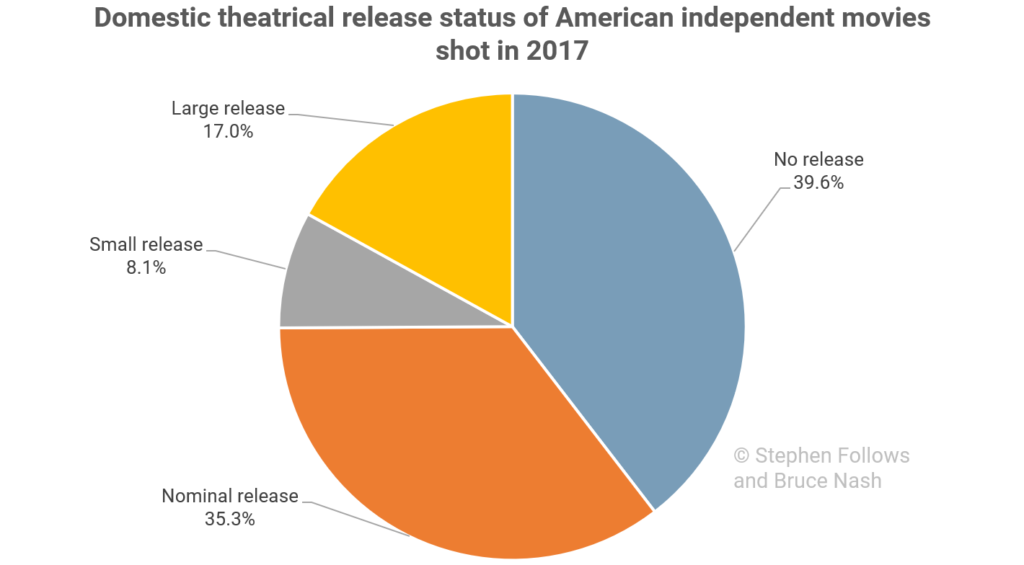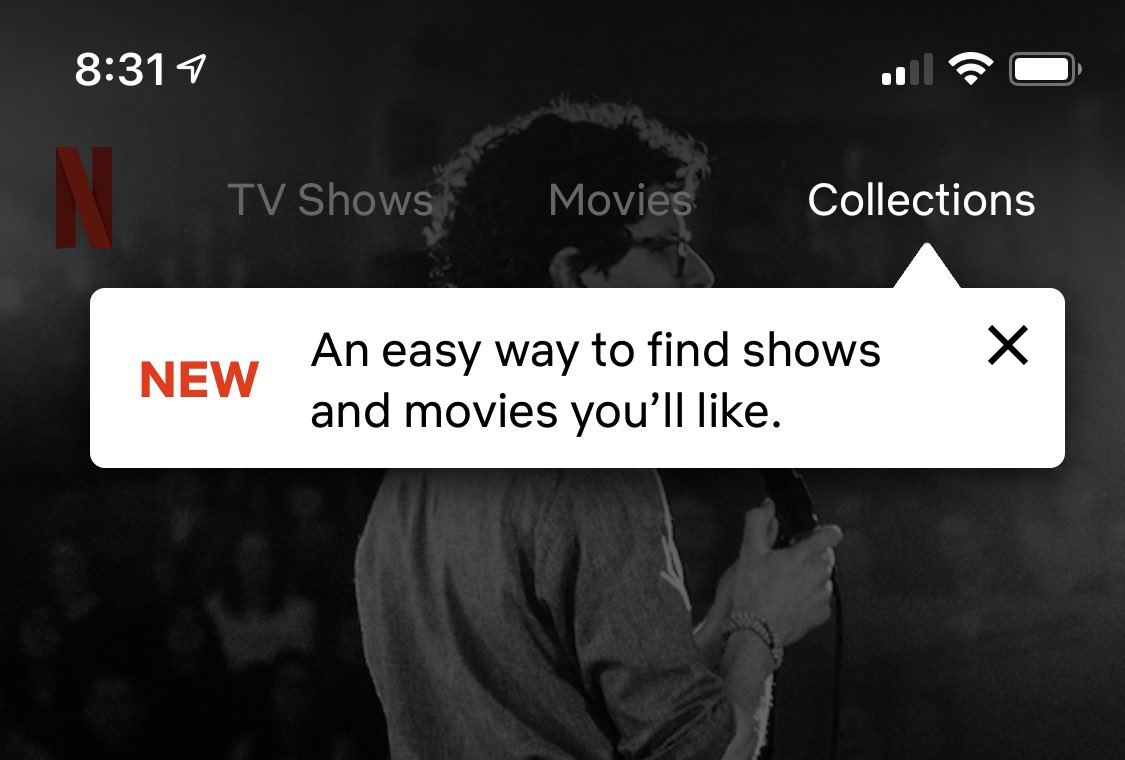Cam Cullen,VP of Global Marketing for Sandvine, has announced the release of the 2019 Global Internet Phenomena Report (registration required.)

There are lots of valuable takeaways here.
For instance, this year Netflix has been bumped into second place for downstream traffic by HTTP Media Stream, the collection of video streaming sites that use a standard video streaming protocol that Sandvine does not track individually.
Nevertheless, Netflix still accounts for 12.6% of global downstream traffic.
More:
- Video is over 60% of the total downstream volume of traffic on the internet.
- Netflix is 12.60% of the total downstream volume of traffic across the entire internet and 11.44% of all internet traffic.
- Google is 12% of overall internet traffic, driven by YouTube, search, and the Android ecosystem.
- Gaming traffic and gaming-related bandwidth consumption is increasing as gaming downloads, Twitch streaming, and eSports go mainstream.
- BitTorrent is over 27% of total upstream volume of traffic, and over 44% in Europe, the Middle East and Africa (EMEA) alone.
- Facebook applications make up over 15% of the total internet traffic in APAC, the Asia-Pacific region.
And fragmentation is only going to get worse. “There are a number of new services that will be launching in the next year that may yet again change the traffic landscape by the next Phenomena Report:
- Disney+: Star Wars, Marvel, Pixar, and decades of TV and movies, all priced extremely well with compelling original content. How could this fail?
- Apple TV+: With the offer of free original content with purchase of an Apple device, this could drive up usage in Apple-heavy markets.
- Universal: Another library with decades of content, with attention being given to “The Office,” which was one of Netflix’s most watched TV shows.
- HBO Max: Warner Bro’s offer with another massive content library that will build on HBO Go and will leverage popular TV series, especially “Friends”, this service promises to be, ‘there for you when the rain starts to fall.’
- Other video services: DC Universe, Facebook Watch, and Discovery have all announced planned services.
- Google Stadia: It’s not just streaming video that is coming, Stadia is maybe the “Netflix of Gaming,” perhaps something totally unique with bandwidth requirements between 10-35Mbps and expectations of low latency.”
Even more interesting: over 43% of the internet is consumed by Netflix, Google, Amazon, Facebook, Microsoft, and Apple.

“The biggest bandwidth consumption for applications or content libraries for each brand included:
- Google (Alphabet): YouTube, Android Market, Google Search, Google Docs, Google Drive, DoubleDlick, Gmail, and Crashlytics
- Netflix: Netflix Video
- Facebook: Facebook, Instagram, Facebook Video, WhatsApp, Facebook Messenger, Oculus Rift
- Microsoft: Xbox Live, Windows Update, Skype, Outlook 365, Office 365, SharePoint, OneDrive, Windows Store, LinkedIn
- Apple: iTunes, iCloud, Apple Software Update, FaceTime, Apple Music, Apple.com, iCloud Photo Stream, Mac App Store
- Amazon: Amazon Prime, Twitch, Amazon.com, Alexa, Amazon Glacier, Amazon Music”

I highly recommend registering and downloading the 23 page PDF for all the insights.
My take: I think the most interesting stat here is the 43% share of the Internet by the six largest tech companies. It won’t be long before their share is more than half. What happens when more than half of the traffic on the information super-highway is by the Big Six?











